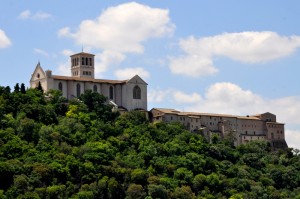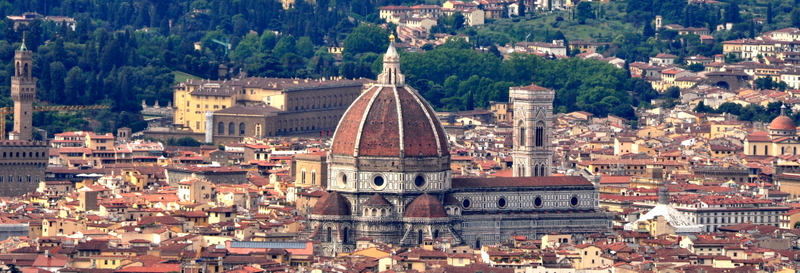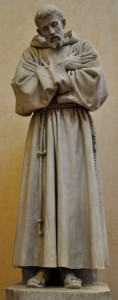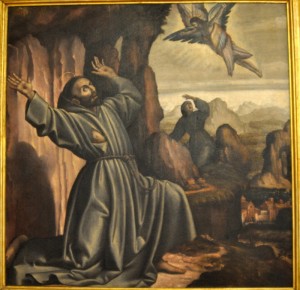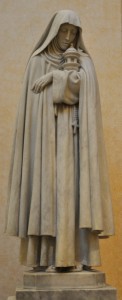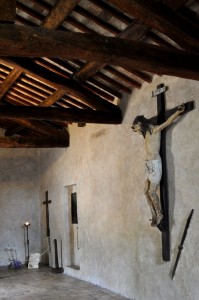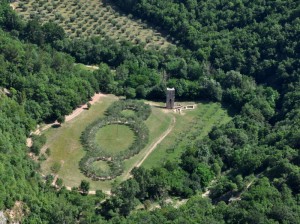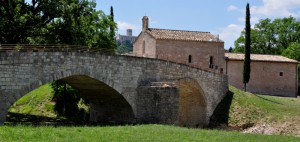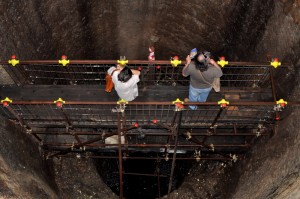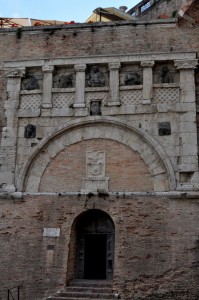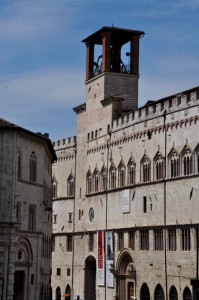June 15- 20, 2015: Florence, Assisi & Perugia
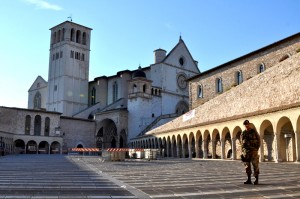 |
June 15 Monday: Zurich, Switzerland – Florence, Italy
I departed Zurich at 11:30am, spent several hours in Rome waiting for a connecting flight to Florence which was delayed for 75minutes. By the time I got my luggage and left the Florence airport, it was almost 5pm.
It was raining heavily. I got totally wet when crossing a road to catch a bus (€6) to the city centre. There was serious flooding and the traffic was chaotic.
I was relieved when the bus driver let us off near the train station (but not the bus terminal). There are plenty of hotels and pensions near the station. After checking half a dozen of hotels along Della Scala, I still could not find a room. Finally, I spotted Hotel Margaret which had a room without toilet and shower bath. The owner gave me a discount and let me have it for €50. Many pensions charge €70-80 for a similar room. Ridiculous!
I am satisfied with my room which is spacious, clean and quiet. But it would not be available the next day. Hence I went out to look for another hotel as soon as I put down my luggage. After approaching a few hotels, I realised it would be very difficult if not impossible to find a room at a reasonable rate for the next few days. I had to return to Milan for the Expo on June 23. Before that I could make a side trip to Assisi (about 170km from Florence) and Isla Elba where Napoleon was first imprisoned.
After purchasing train tickets to Assisi and Milan, I began exploring the historic centre of Florence, a World Heritage Site and the symbol of the renaissance with extraordinary architecture. I walked past the Duomo (Cathedral) and the Uffizi before crossing Ponte Vecchio, all landmarks of Florence. During my previous two trips (1980 and 1988), I had fell in love with it and had been to the main museums. I am sad to find Florence noisy, touristic and expensive having losing its soul, magical touch and charm as a result of excessive consumerism and mass tourism.
Away from Ponte Vecchio and the crowd, I could find traits of the charming city I once loved. I had a simple dinner (soup and tripe) in a cafe with a view on River Arno. The sun was setting: I spent the next half an hour watching a beautiful sunset walking from Ponte Vecchio to Ponte S Trinita.
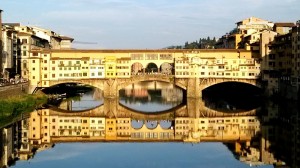 |
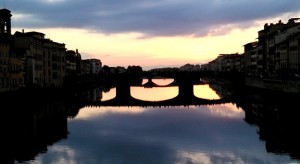 |
In the evening, I attended a concert held in the Church S Monaco near Piazza del Carmine. I do not know the names of the two singers. One looks Chinese and the other is an Italian lady with a very powerful and moving voice.
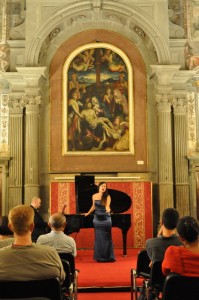 |
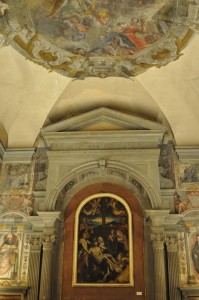 |
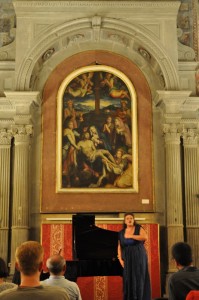 |
June 16 Tuesday: Florence – Assisi
I had a frustrating and tiring day. I packed a light backpack for a few days and left my suitcase in Hotel Margaret where I would return to stay on June 22. As my train to Assisi would be leaving at 4:09pm, I spent the morning exploring the old town.
Originally I planned to visit a couple of museums. The crowd, queue and noise however put me off. I discovered a free exhibition on ‘Traces of Florence‘ in Museo di Palazzo Vecchio which turns out to be a nice surprise. A staff told me that the exhibits with good explanations are not normally on display. I am lucky.
I went into the Duomo and noticed Michelangelo’s Pieta has already been moved to the museum together with other sculptures. The place I enjoy most is the Mercato Lorenzo (Central Market) which has smarted up with dozens of eateries and a cooking school.
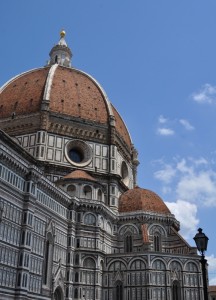 |
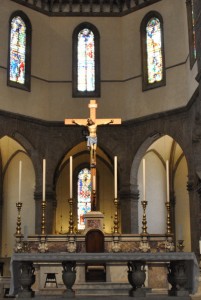 |
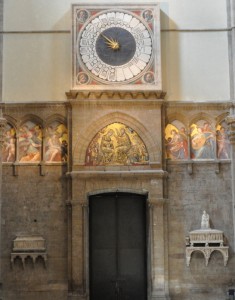 |
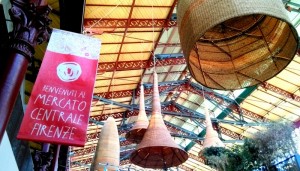 |
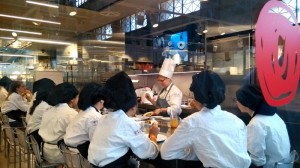 |
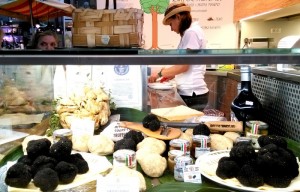 |
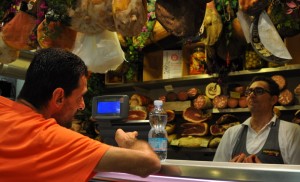 |
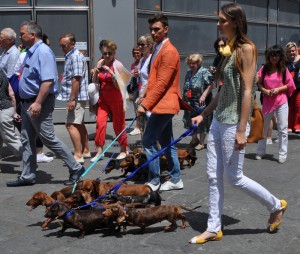 |
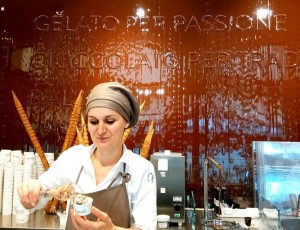 |
I arrived at the train station around 3:45pm. By 4:30pm, the train was still not moving. What happened? A passenger in broken English told me that there’s a strike till 5pm. It was sparked off when a conductor who demanded an African passenger to show a ticket was attacked and his arms were almost cut off. The trade union demanded improved security be provided on the train.
No one seemed to know what’s happening. I followed a young couple and got off the train. The notice board indicated that our train would be delayed for 40 minutes. Hence, I followed others and returned to the train. It was hot and the train was like an oven. At 5pm, there was still no movement. Later on, the notice board removed the reference to our train and indicated that the next train to Assisi would be departing after 5pm. But the train did not leave till 6:30pm. All passengers clapped their hands! The lady sitting next to me said, “Italy has many problems and there is nothing the Italian can do. Italy needs San Francesco (St Francis in English) to help and solve problems!”
I arrived at the Assisi train station just in time to take the 8:46pm bus (€2 for a ticket purchased on the bus but €1.3 from a tobacco shop). I had booked a room with breakfast at Hotel Pallotta (near St. Rufino Cathedral) for €45. My room is lovely and comfortable with good Wi-Fi. I like Assisi so much that I dropped the idea to visit Isla Elba and stayed at Hotel Pallotta for four nights.
June 17 Wednesday: Assisi
Assisi is a town in the province of Perugia in the Umbria region on the western flank of Mt. Subasio. It was the birthplace of St. Francis (1181/1182-October 3, 1226) and St Clare(16th July 1194 – 11th August 1253), the founder of the Franciscan religious order and the Order of Poor Clares respectively.
St Francis of Assisi
Born Giovanni di Pietro di Bernardone, the saint was nicknamed Francesco (a tribute to France) by his father, a rich silk merchant. In 1201, he joined a military expedition against Perugia and was taken a captive for a year. In 1205, he left again to enlist in an army but a strange vision made him return to Assisi deepening his ecclesiastical awakening. He lost his taste for his worldly life and spent much time in lonely places asking God for enlightenment. By degrees he took to nursing lepers and on a pilgrimage to Rome, he joined the poor in begging at St. Peter’s Basilica. These experiences moved him to live in poverty and he began to preach.
St Francis had a mystical vision of Jesus Christ in the country chapel of San Damiano just outside Assisi, in which the Icon of Christ Crucified said to him, “Francis go and repair My house which, as you can see, is falling into ruins”. He took it to refer to the ruined church in which he was praying. He then assisted the priest to repair it and restored several ruined chapels in the countryside later including the Porziuncola, the little chapel of St Mary of the Angels which later became his favourite abode.
In February 1209, he was inspired to devote himself to a life of poverty after hearing a sermon about Matthew 10:9. Clad in a rough garment, barefoot and without staff or scrip, he began to preach repentance and was soon joined by his first follower, a prominent townsman, the jurist Bernardo di Quintavalle. Within a year Francis had 11 followers. Francis and his followers walked to Rome and his order was authorised by Pope Innocent III in 1210. He also founded the Order of Poor Clares which became an enclosed religious order for women and the Order of Brothers and Sisters of Penance.
In 1219, he went to Egypt in an attempt to convert the Sultan to put an end to the conflict of the Crusades. In the next few years, he organised the Fransican Order and then withdrew increasingly from external affairs. In 1223, he arranged for the first Christmas nativity scene. The following year during a 40-day fast in Mount La Verna, he received the stigmata making him the first recorded person to bear the wounds of Christ’s Passion and died on 3rd October 1226. On 16th July 1228, Pope Gregory IX proclaimed him a saint. He is also known as the patron saint of animals and the environment and is one of the two saints of Italy (with Catherine of Siena).
UNESCO has collectively designated the Franciscan structures of Assisi including the Papal Basilica of St. Francis of Assisi, Papal Basilica of St. Mary of the Angels in Porziuncola, Eremo delle Carcerias, a World Heritage Site.
Assisi is impressive arranged in terraces along the slopes of Mt. Subasio overlooking the fertile Umbrian valley. The town built in stone is majestic and beautiful. A few steps from my hotel is the Piazza del Comune which leads to the Basilica of St Francis located at the end of Via S. Francesco. The square though not big, is solid and stylish with the Palazzo del Capitano del Popolo (mid-13th century), the adjoining Torre del Popolo (“People’s Tower”, 1305), the Palazzo dei Priori (“Palace of the Priors”, 1275-1493).
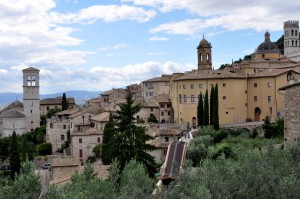 |
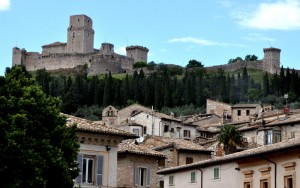 |
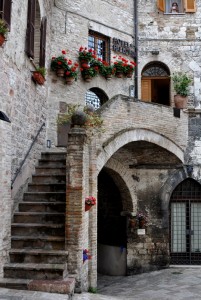 |
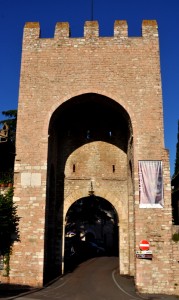 |
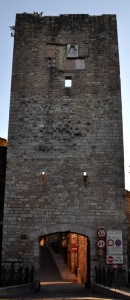 |
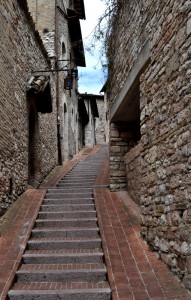 |
I had a wonderful day. My first stop was the Piazza del Comune where the Temple of Minerva stands. Then I got a combined ticket for €8 and visited two museums namely the Foro Romano and Pinacoteca Comunale at Vallemani Palace. The former has an interesting archaeological collection underground showing remains of the Roman forum located beneath the present day Piazza del Comune. The latter shows historical records and paintings of the city from the Middle Ages to the end of the Renaissance period and houses the Museum of Remembrance, Assisi 1934-44. I learn how the people here had saved some 300 Jewish people.
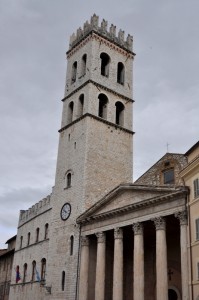 |
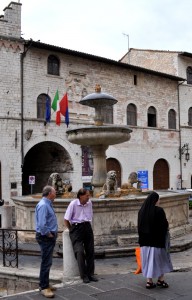 |
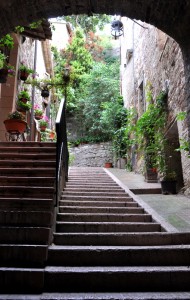 |
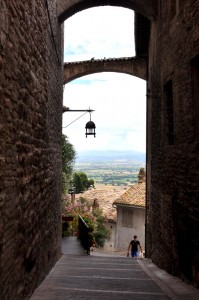 |
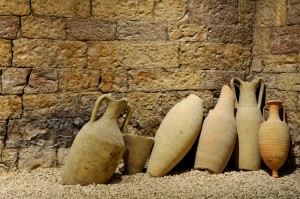 |
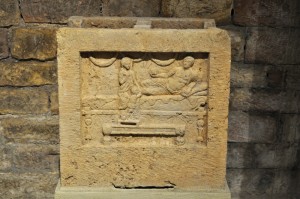 |
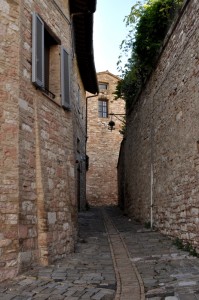 |
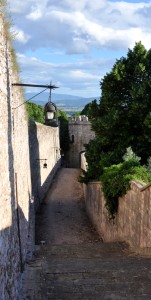 |
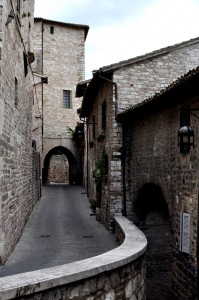 |
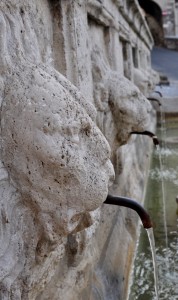 |
I arrived at the Basilica of St. Francis around midday. As the mother church of the Franciscan Order, it is one of the most important places of Christian pilgrimage in Italy. Construction of the basilica began in 1228. It comprises two churches known as the Upper Church and the Lower Church and a crypt where the remain of St. Francis are interred.
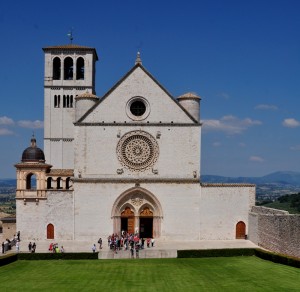 |
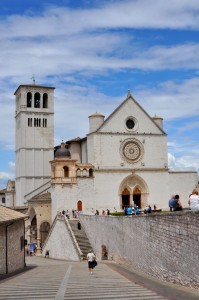 |
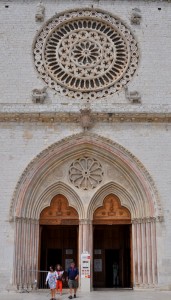 |
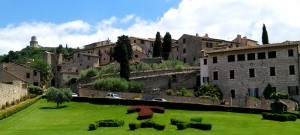 |
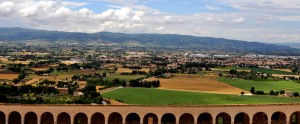 |
Hotel Pallotta provides guests with a guide book on Assisi. Armed with information on the history, architecture and the story and painters of the frescoes, I had a wonderful time totally immersed in this holy place.
The lower church built in Romanesque style was structurally a large crypt supporting the Upper Church built in Gothic style. Both are decorated with frescoes by numerous late medieval painters from the Roman and Tuscan schools and include works by Cimabue, Giotto, Simone Martini, Pietro Lorenzetti. The range and quality of the works give the basilica a unique importance in demonstrating the development of Italian art of this period.
What fascinates me most is the crypt. The remains of St. Francis which had been hidden by Brother Elias to prevent the spread of his relics in medieval Europe, was found in 1818. By order of Pope Pius IX, the crypt was built under the lower basilica. The present design in bare stone with iron ties in neo-Romanesque style was done by Ugo Tarchi between 1925 and 1932. In 1934, St. Francis’s most faithful brothers Rufino, Angelo, Masseo and Leo were entombed in the corners of the wall around the altar.
Next to the basilica stands the Friary Sacro Convento built with pink and white stone from Mt. Subasio and completed in late 15th century. Its imposing walls and 53 Romanesque arches and powerful buttresses support the whole complex. The friary now houses a library and a museum including 57 works of art of the Perkins collection. I find the exhibits excellent and the collection most enjoyable.
On the morning of 26th September 1997, two earthquakes in quick succession hit this region causing widespread devastation. The aftershock further caused the collapse of the vault bringing serious damage to the fresco by Cimabue. Much of the cycle of frescoes of the life of St. Francis by Giotto in the Upper Church were slightly damaged. The edifice was closed for two years for restoration.
I was more interested in sightseeing than food. It was 2:30pm. Instead of having lunch in a restaurant, I brought a portion of roast pig and a bottle of wine and had a nice meal and rest in my hotel.
Then I set off heading to Church of San Damiano which is 1.5km downhill from Assisi. This sanctuary is where St. Francis heard the Crucifix exhorting him to restore the church and where St. Clare and her disciples stayed.
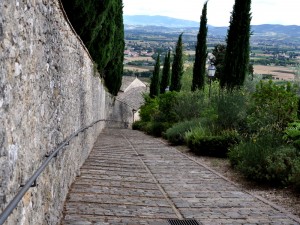 |
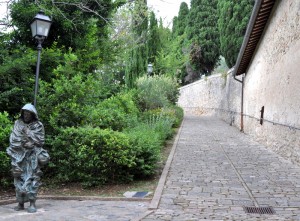 |
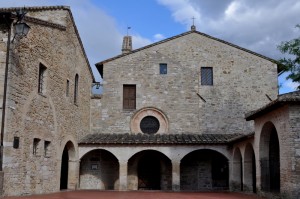 |
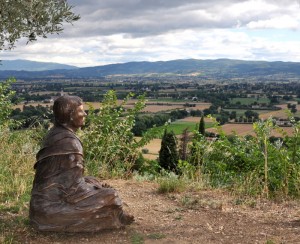 |
Back in Assisi, I first went to the Cathedral of St. Rufino dating 1140 with an impressive Romanesque facade with three rose windows and a 16th century interior. Part of it was built on a Roman cistern. I saw the ancient christening font where St. Francis and St. Clare were baptised. Then I arrived at the Basilica of St. Clare (1257-1265) built in Gothic style. The body of St. Clare is preserved in the crypt. The square outside the church affords a nice panoramic view of the city and the surrounding area.
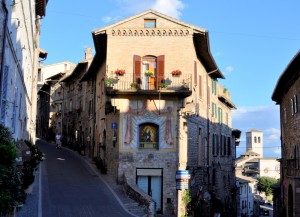 |
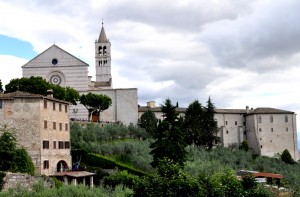 |
By the time I reached the Church of St. Peter built by the Benedictines in the 10th century and rebuilt in the 13th century, it had already closed. It has an elegant facade and an unusual dome.
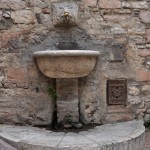 |
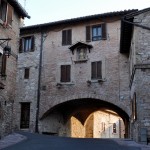 |
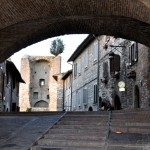 |
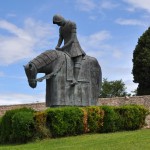 |
The weather was excellent and I could tell the sunset would be gorgeous. Rocca Maggiore (the highest point behind the town) would be a perfect spot to watch sunset. Nonetheless I had been walking for over ten hours and too tired to walk to Rocca Maggiore. Hence, I went to the top floor of the hotel which affords only a partial view of the sunset. I planned to walk up to Rocca Maggiore to watch sunset the following day. Unfortunately, the sunset for the next three days was disappointing.
June 18 Thursday: Assisi
 I had a full day in Assisi. My first stop was Rocca Maggiore. The town is dominated by two medieval castles. The larger, called Rocca Maggiore, was built by Cardinal Albornoz (1367) and expanded by popes Pius II (polygonal tower, 1458) and Paul III (the cylindrical bastion near the entrance, 1535-1538). The smaller of the two built in Roman era has been only partially reserved and a small portion and three towers are now open to the public.
I had a full day in Assisi. My first stop was Rocca Maggiore. The town is dominated by two medieval castles. The larger, called Rocca Maggiore, was built by Cardinal Albornoz (1367) and expanded by popes Pius II (polygonal tower, 1458) and Paul III (the cylindrical bastion near the entrance, 1535-1538). The smaller of the two built in Roman era has been only partially reserved and a small portion and three towers are now open to the public.
I had an interesting time with plenty of exercise walking up the towers – the tall one affords stunning views of the whole region including the Terzo Paradiso, a work of Land Art created by artist Michelangelo Pistoletto for Bosco di San Francesco.
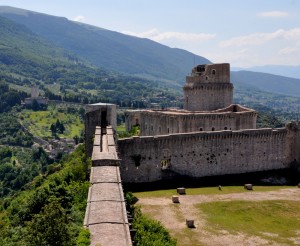 |
My next stop was the Bosco di San Francesco, a form of 21st century pilgrimage into nature, history and the sacred. Fondo Ambiente Italiano (FAI) has brought a completely abandoned site encompassing 64 hectares alive through restoration and regeneration efforts. Here a visitor today can walk through an Italian rural landscape and more than 800 years of history.
I strolled through a woodland to reach the restored Benedictine complex – Santa Croce before reaching Terzo Paradiso, a serene land art through olive trees planted in three interconnected rings. I took over two hours for this wonderful journey (about 4-5km).
I had a late lunch at Trattoria Pallotta. As a guest of the hotel, I paid €16 instead of €18 for an excellent 3-course lunch.
The last stop was Eremo delle Carceri, a hermitage / small monastery with church where St. Francis retreated and preached to birds. There are many caves in which the saint and his brothers spent time in solitude and prayed.
I left Assisi before 4pm and reach this oasis of peace and tranquility in the midst of the woods on the slopes of Mt Subasio around 5pm. There were few visitors and I stayed in the tiny cave where St Francis had stayed by myself for ten minutes. I was back in town at 7pm. Today, I walked about 15km- good exercise.
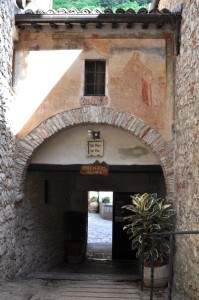 |
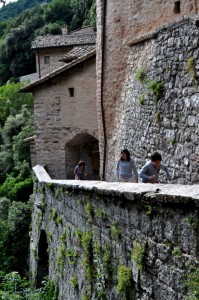 |
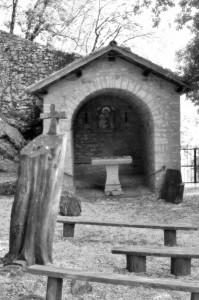 |
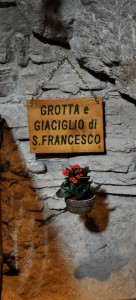 |
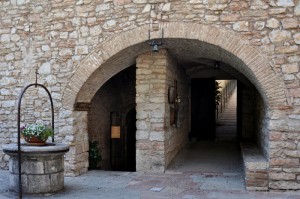 |
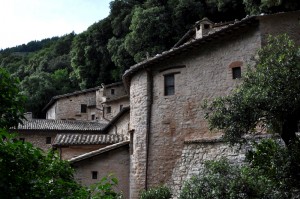 |
June 19 Friday: Perugia
Assisi and the whole region are enticing. Perugia, the administrative and cultural capital of Umbria region, is only 24km from Assisi and is perfect for a day trip. I took the 8:30am bus and arrived at the bus terminal in Perugia before 9:30am.
Rocca Paolina, an entrance to the city, is an historical-architectural complex unique in its kind with “enclosure” of the medieval city hidden inside. I had a sketch map of the city and managed to find my way to Rocca Paolina. I followed a main road and reached the Scalette S. Ercolano, a winding path with steps leading up to Piazza Italia. Here the panoramic views of the city and valley below are excellent. I spotted a camera shop nearby. I brought a new filter and had my camera checked and serviced for €40 (good value). My 5-year old and over-used Nikon seems to function better thereafter.
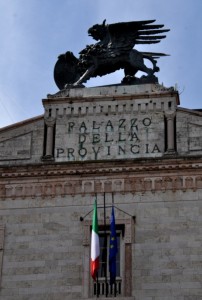 |
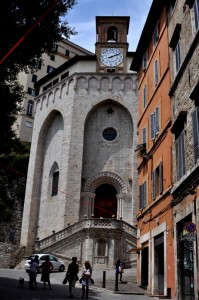 |
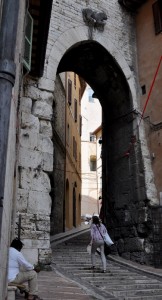 |
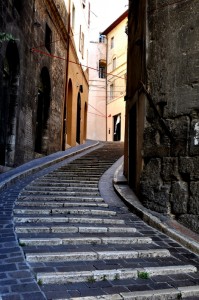 |
The historic centre lying within a beautiful Etruscan-Roman and medieval city wall, is a gem dotted with historical and beautiful buildings, fountains, churches, gates and squares. It was a beautiful day. I walked from Piazza Italia to Piazza della Repubblica and walked by the magnificent Palazzo dei Priori which housesthe national gallery. Construction of the palace began in 1279. I walked on and reached Piazza IV Novembre where the imposingDuomo (Cathedral of San Lorenzo) (1345-1490) and Fontana Maggiore (built in 1277-78) are located.
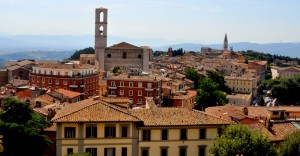 |
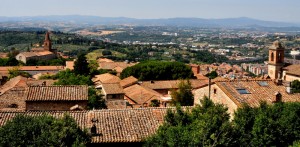 |
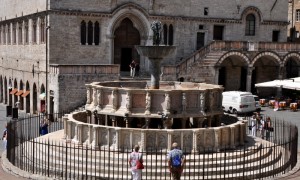 |
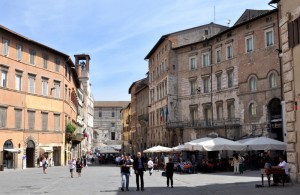 |
After the Duomo, I reached the Pozzo Etrusco which is an amazing Etruscan well that had made settlement here possible. I got a combined ticket for three attractions including the well. Then I went to the Chapel of San Severo to see a fresco painted by Raphael (1483-1520), a great Renaissance artist and a museum at Porta Sant’Angelo at the end of Corso Garibaldi. Close to this impressive gate is a small paleo-Christian Church of Sant’Angelo dating from the 5th – 6th centuries. Its circular layout is framed by 16 antique columns.
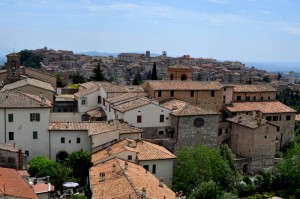 |
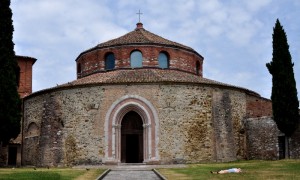 |
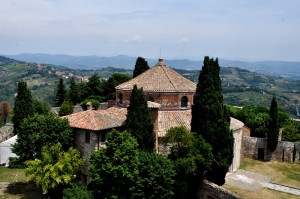 |
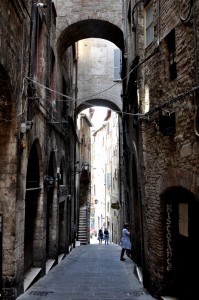 |
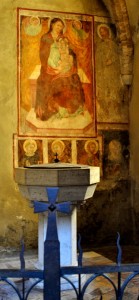 |
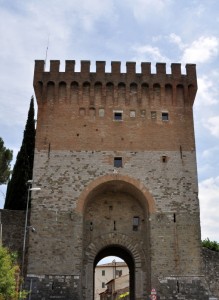 |
I enjoy this beautiful universities town. In the afternoon, I explored the other side of the historic city walking along Corso Cavour to reach the Church of St. Peter (late 16th-century). The abbey is now part of the University of Perugia.
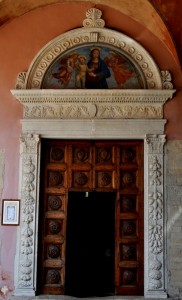 |
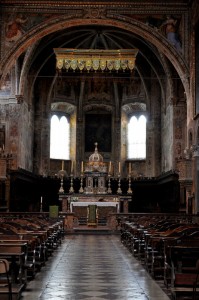 |
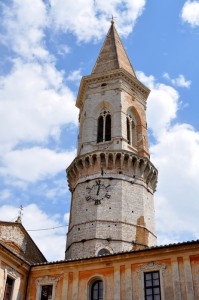 |
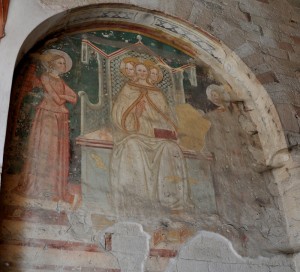 |
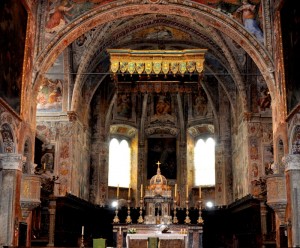 |
I also visited Temple Ercolano and the imposing Basilica of the Dominican Order (built between 1394 and 1458) with a massive belfry partially cut around the mid-16th century. The exterior design of the basilica attributed to Giovanni Pisano. The interior hosts the tomb of Pope Benedict XI.
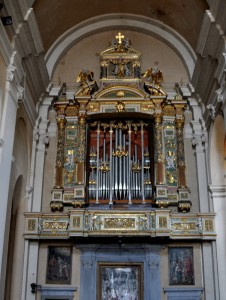 |
I was hungry and had prosciutto and a glass of local red wine in a wine shop “Bottega” for €5. Excellent value! By 5pm, I was tired and ready to go. I went to the bus terminal and found the next bus would be leaving at 6pm. But no one told me to change for a local bus at the Assisi train station. When the bus did not go uphill towards Assisi, I suspected something was wrong and asked the driver whether it would be going to Assisi.
But instead of letting me off, he called his office. I did not know what was going on as he could not speak English. When the bus passed by the Sanctuary of Rivotor (4.5km from Assisi), I should have asked him to drop me off. This “hovel of St. Francis” has been preserved in the memory of the first Franciscan community and is on the pilgrimage trail.
Anyway, the driver decided to take me to the bus terminal in Foligno where I could take a train back to Assisi. My blood pressure rising and I had to calm myself down. I arrived at the train station at 7:15pm. As the next train would be leaving at 8:50pm, I had to spend over an hour here.
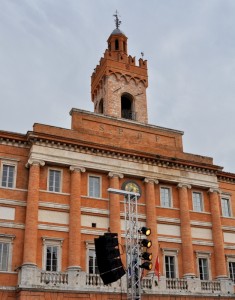 |
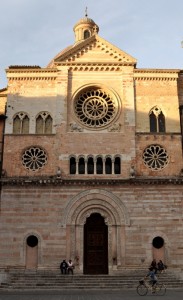 |
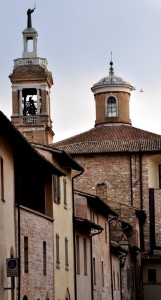 |
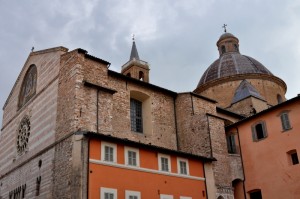 |
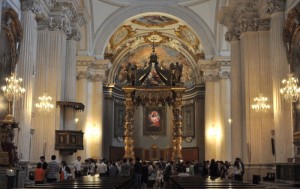 |
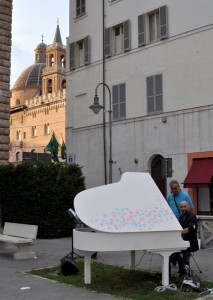 |
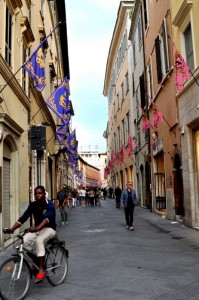 |
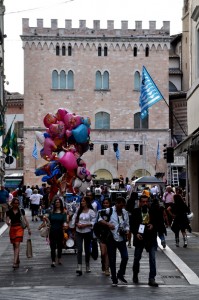 |
I took things easy and wandered around this town. Today was the last day of the religious year and many church-goers were leaving the cathedral when I arrived at the square. Food stalls had been set up and a band was playing music. I brought a delicious ice-cream for €2.5 with three flavours. Great value!
The train ride takes only 15 minutes. But there’s no bus to Assisi till 9:46pm. A taxi driver asked €15 for a 4-km journey. I decided to have dinner while waiting for the bus. But the restaurant of a hotel nearby was closed and I could only have McDonald or pizza. Both are not my flavourite and I preferred not to eat.
It was raining and the bus was late. By the time I was back in Assisi, the restaurants were closed too. So I had a nectarine and apple from the hotel as my supper.
June 20 Saturday: Assisi – Florence
I left for the train station after 9am. Close to it is the imposing Basilica of St. Mary of the Angels in Porziuncolaconstructed between 1569 and 1679 and crowned by a magnificent dome designed by Alessi. This is a sacred and pilgrimage site: it encloses the Porziuncola – the first Franciscan monastery and the place where St. Clare received the Franciscan cowl from St. Francis in 1211 and the Cappella del Transito where St. Francis died on 3rd October 1226.
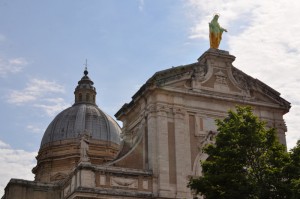 |
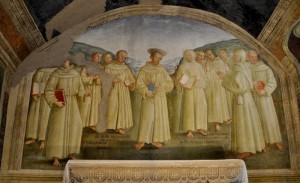 |
I found the ambiance awesome: a service was going on in the tiny Proziuncola with many faithful pilgrims standing outside. I spent a few minutes in the Cappella del Transito paying respect to St. Francis.
To the side of the Basilica is the Chapel of the Roses and the Porziuncola Museum. I ended my tour to Assisi at this sacred place where St. Francis died.


